Walking The Sasaguri Henro 88 Temple Pilgrimage, Kyushu Island, Japan
Sasaguri Henro 88 Temple Foot Pilgrimage, Kyushu Island, Japan
When I looked online at possible walks around Fukuoka and its surroundings, there was no mention of a pilgrimage.
One day, at our Japanese language school, a teacher mentioned it to us.
She also loves hiking, and upon hearing that we walked the 88 Temple Shikoku Henro pilgrimage last year, she told us that in the nearby town of Sasaguri, there is a similar pilgrimage that is much shorter and that we could probably complete in just a few days.
I couldn’t find much information in English in the way of maps, temple information or details about the pilgrimage to help in our planning, so we decided to take the train from Fukuoka to Sasaguri and visit the information center there.
I was hoping that they would have a map or a brochure with some information in English that we could use to plan our walking route.
On a sunny weekend, we dressed in hiking clothes and wore our trusty pilgrimage shoes, and took the train to Sasaguri.
From Hakata Station in Fukuoka, it was only a short twenty minute train ride to Sasaguri Station.
The information center in Sasaguri was closed between 12 noon and 1pm for lunch, so we decided to walk to one of the nearby temples to see if they had a book that we could use to start collecting temple stamps.
I used Google maps to locate the nearest temple, and as is often the case, the temple was not exactly where it was shown on the Google map.
I approached a local man on the street and asked for directions.
He was very friendly, but he looked like the kind of man you might find lounging in a dark bar, rather than in a Buddhist temple.
He bowed and apologized a dozen times for not knowing where a very old temple in his own neighborhood was located.
We walked around the corner a few blocks and finally found the temple ourselves.
As I expected, there were a few shops nearby filled with everything that a pilgrim might need.
They sold pilgrim’s white shirts, white bags, straw hats, walking sticks with dangling bells, rice paper to copy sutras, books to collect stamps at each temple, incense and candles, bear bells to attach to your bag, printed booklets with the Buddha’s Heart Sutra, sweets and snacks for long days of walking, and perhaps most importantly for us, a detailed map with all of the 88 temples of the Sasaguri Henro walking route.
The reason the map is so useful and important in this case, is that this area is filled with dozens of additional Buddhist temples that are not part of the 88 temples on the pilgrimage.
The surrounding hills and mountains are literally dotted with many more Buddhist temples and Shinto shrines, many of them large and beautiful with beautifully manicured gardens and many sculptures of Kukai, the Buddha, Kannon and other deities, but they are not part of the 88 temple pilgrimage.
The map is available only in Japanese.
A friendly man from one of the shops came over to explain it to me.
He spoke only Japanese, but by now, my Japanese was good enough to understand his instructions.
He explained that most of the temples are not manned.
There are no monks living there or attendants to sign our pilgrimage book.
We must do it ourselves.
He pointed to the map and explained that only the temples colored in red have an attendant who can draw a calligraphic stamp in our book.
All the temples marked in white are unattended.
After praying, lighting incense and dropping our Osamafuda (pilgrims’ name slip with our names, country, date and wishes) in the designated box, we have to stamp the book ourselves.
“Every temple will have this big black box,” he explained.
“First you find the right page and make sure that you have the right temple number, since the temples are NOT numbered sequentially.
For example, you will be walking from here, which is temple 51 to temple 79, which is just next door.
After you have found the correct page, take the long red stamp which indicates the number of the temple and after moistening it on the red ink pad, stamp it in the upper right corner of the page.
The next stamp is the big red stamp.
This one you stamp in the middle of your page.
It has the symbol of the temple’s deity on it.
The third red stamp goes in the lower left corner.
Then you moisten the big black stamp with the temple’s name on it, and you stamp it in the middle of the page, right over the big red stamp.
Make sure to place an old scrap of paper (like a page from a phone book) between the page you just stamped and the next page of the book, so the ink does not smear.
Drop 100 yen ($1) in the donation box for the use of the stamps.
In temples with an attendant who draws in and stamps your book, you will have to pay 200 yen.
Now,….there are a few things you also need to know.
Temple 72 does not have the big black box of stamps in the temple; it is located across the street.
Temple 7 is located on a small mountain and often it is too strenuous for people to climb there, so the stamp box is located at the beginning of the trail, before you start the climb up.
All the temples where the stamp box is not at the temple have a little red dot on the map to show you where the box is located.
At temple 1, they will stamp your book for four temples, since they are all affiliated.
These affiliated temples are 1, 45, 53, and 60.
Temple 53 is not located near them.
It is on a steep green hill across the highway on the opposite hill, but it is associated with those temples and you will have a beautiful view of the reclining Buddha of Nanzoin (temple 60).
It is the biggest bronze reclining Buddha in the world.
Are you planning to walk every day?”
“Well….” I mumbled, “We cannot walk every day since we are busy with school. We can walk only on weekends.
But now that we have started, we plan to finish the whole pilgrimage, even if we walk every Saturday and Sunday rain or shine….”
After he wished us a good journey and gave us some free iced tea, we parted ways.
We were excited to be walking a pilgrimage again.
It took us 7 days to complete the pilgrimage.
We walked a total of 120 Kilometers, mostly because we had to return to Fukuoka every night.
The weather was most pleasant and the experience was very enjoyable, because it gave us the opportunity to escape the crowded city on weekends and to spend long days hiking in the forests, surrounded by lush mountains, and to visit quiet old temples, with nobody around.
We saw almost NO ONE walking this whole pilgrimage, and very few car or bus pilgrims.
For some bizarre reason, every hiker in Fukuoka is hiking on the weekends, on the same few mountains (Homen San and Raizen San), walking in a long line with other hikers.
For me, the whole joy of hiking is to be alone in the forest, enjoying the birds, trees, sounds of the wind in the trees, the crackling of the dry leaves on the forest floor, and experiencing the beauty of the ancient temples.
Because this pilgrimage is not well known, it felt very much like we were playing a game of “Treasure Hunt.”
We had to look for temple signs, often read numbers that were written in Kanji and hidden behind trees.
We had to find the stamp boxes for each temple, which at times were located in front of a family house, in a garage, covered and protected from the rain, etc.
There were always signs directing us to the boxes, but finding the signs themselves felt like we were hunting for clues.
It felt like putting a puzzle together and every time we found a remote temple on the unmarked route, it felt like a discovery.
Every time we found a small soba noodle eatery or a lovely cafe along the route, it was a delight and a welcomed opportunity to refresh ourselves.
The pilgrimage was lots and lots of fun.
We had a few really long days of hiking where we made our way down the mountains barely before it became dark, and another day in which we climbed two mountains in one day.
There was a time we had to go back and retrieve our stamp book that I had accidentally left behind in a small temple up a steep path.
I only discovered that I had forgotten it after we made our way down a slippery bamboo forest path to the next temple.
Most days we did not eat lunch, but brought with us brown rice Onigiris (rice balls) from Hakata Station, along with some peanuts or rice crackers.
We loved making a spiritual connection with Kukai again.
It has been a year since we walked the Shikoku pilgrimage and when I saw a statue of Kukai at one of the temples, it felt like seeing an old and much beloved friend.
(Kukai was the Buddhist monk who practiced asceticism and helped establish many of the temples in Shikoku and the surrounding areas.)
The photo above was taken inside a small temple.
The symbol repeatedly painted on the white cloth is for the word “Eyes.”
The temple was full of such white cloths.
They were written by a group of blind people who came to pray and ask for a miracle for their eyesight to be restored.
May peace, love, grace and healing be a part of everyone’s reality
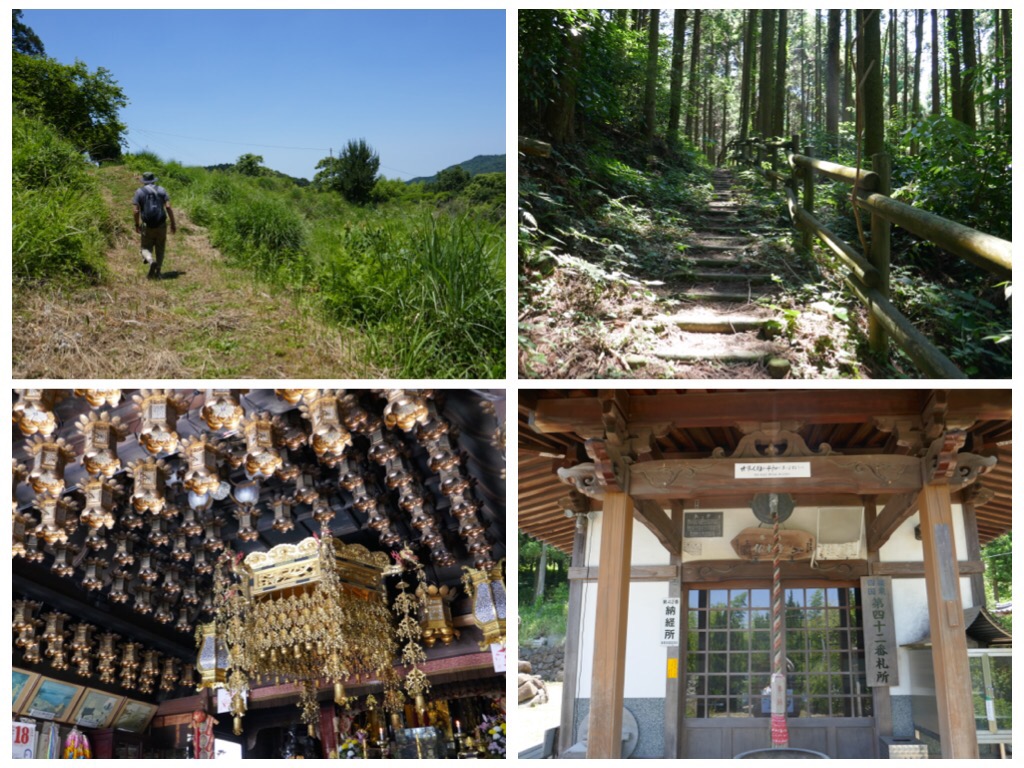



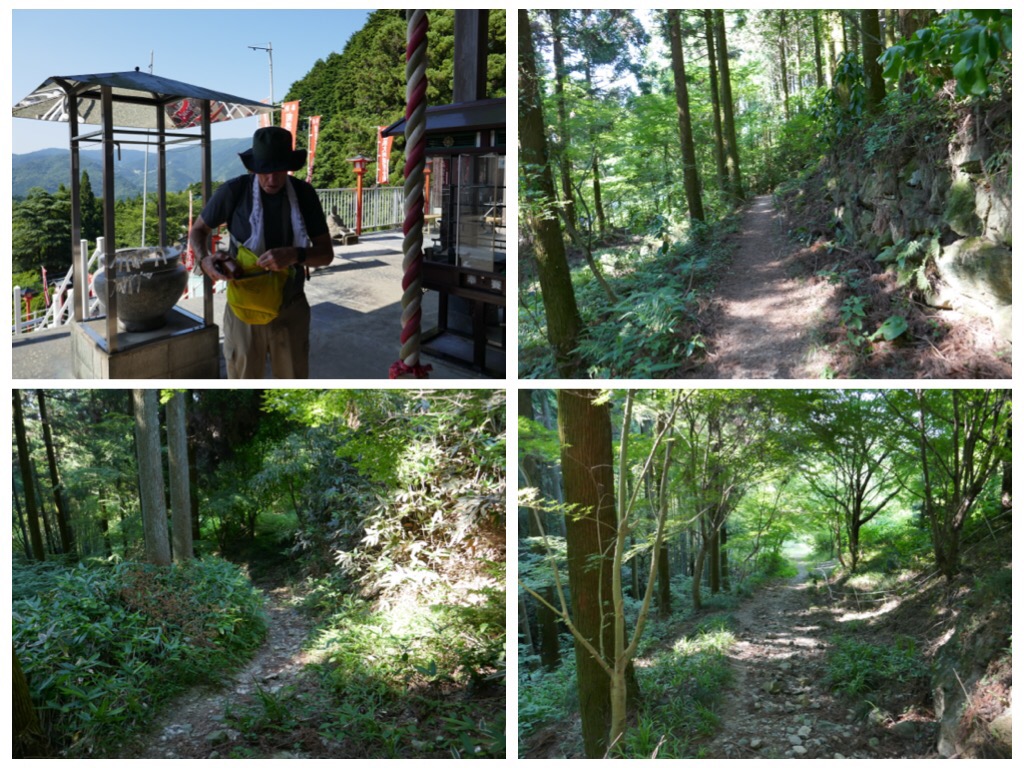

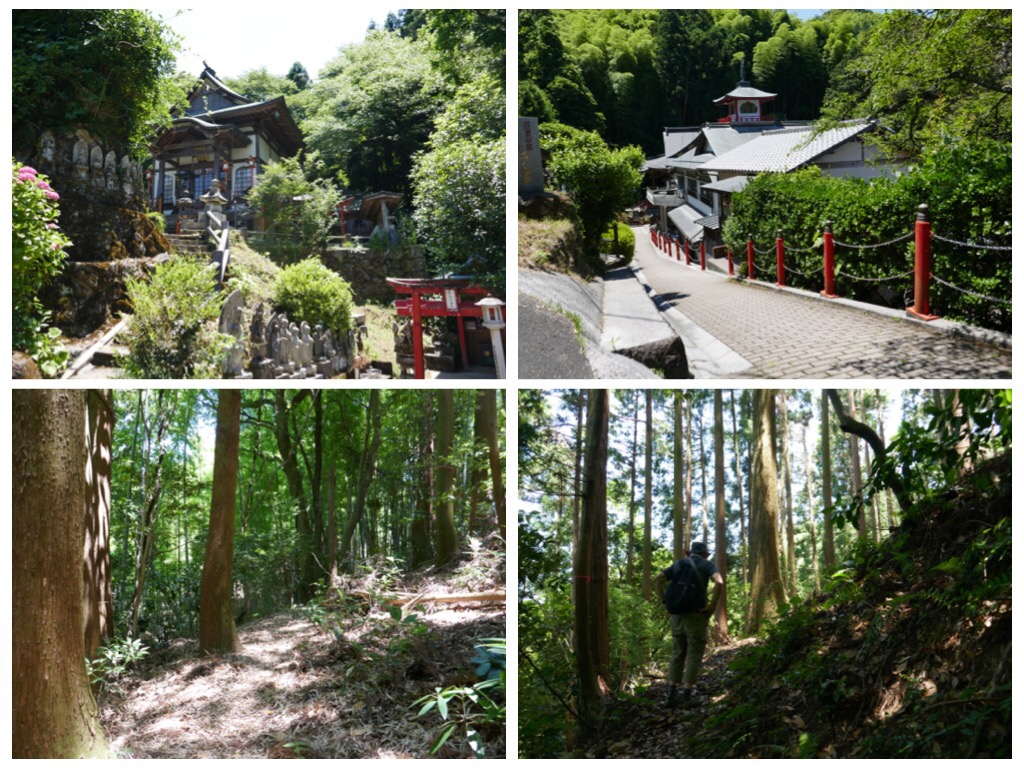



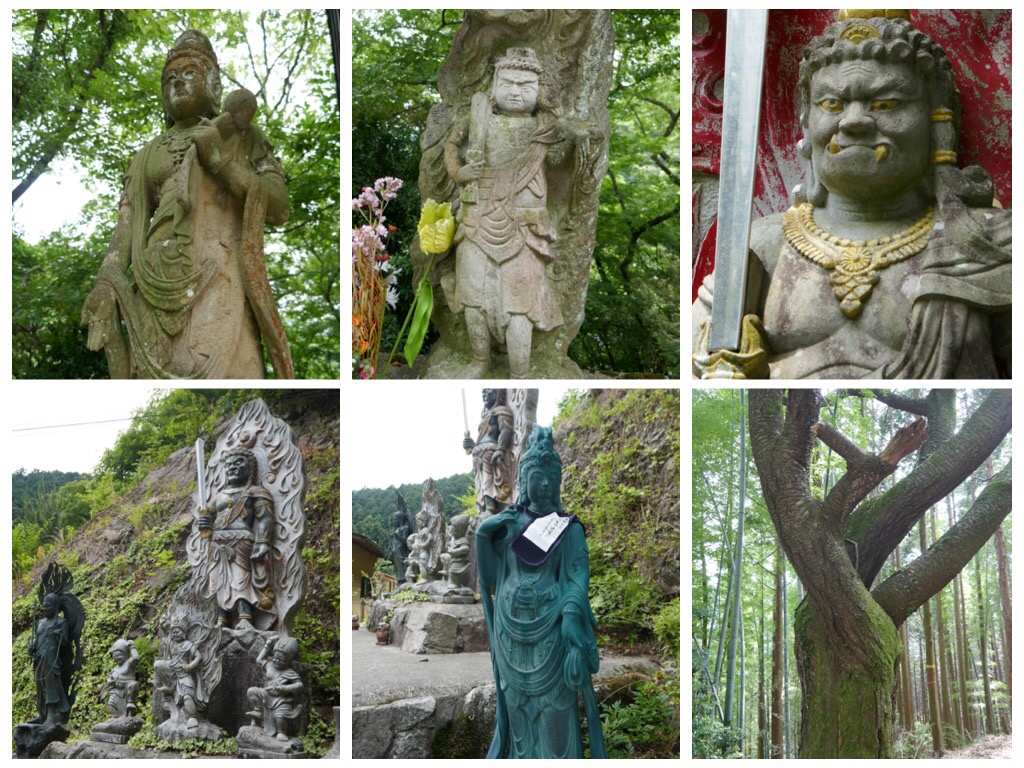


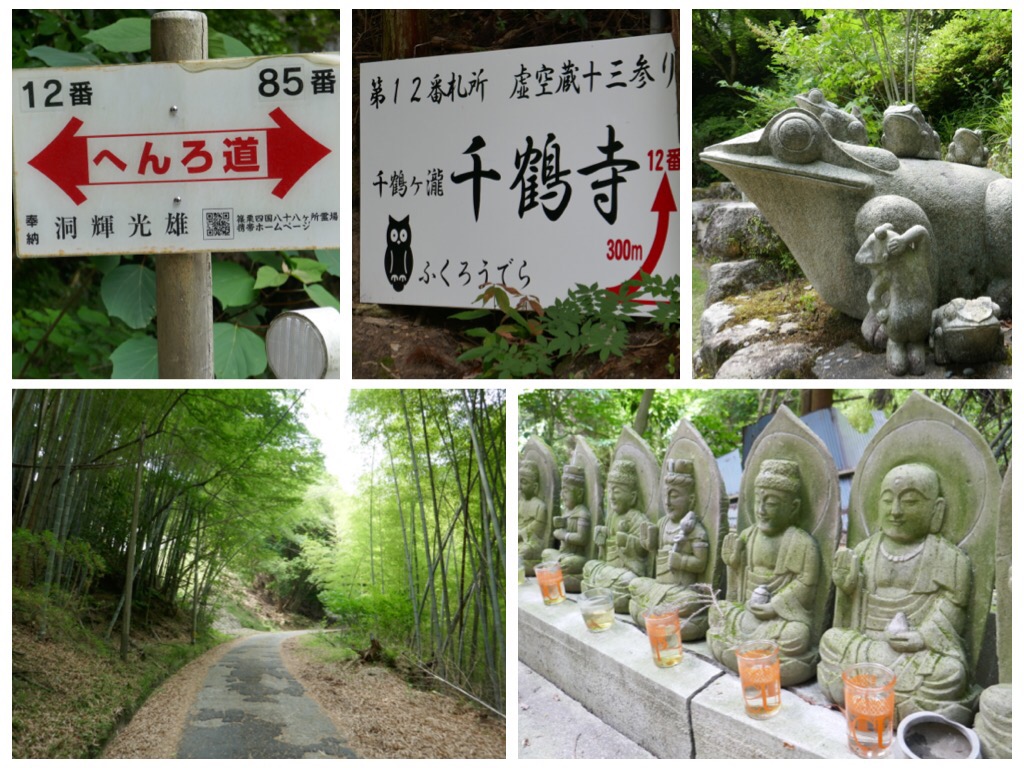




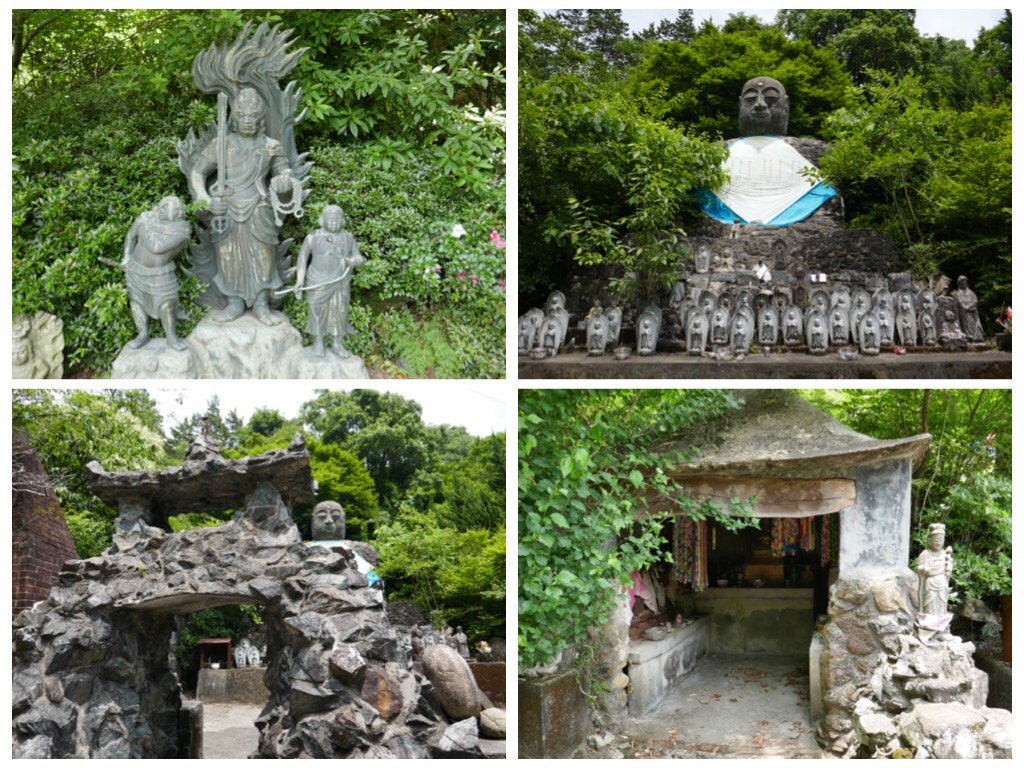


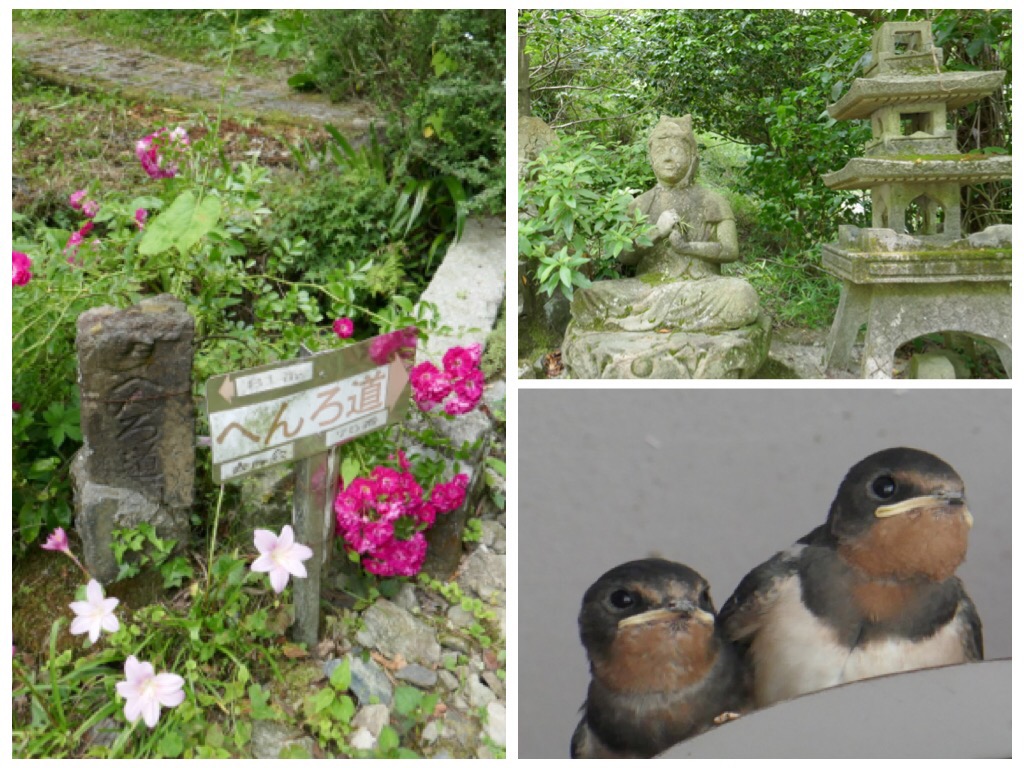
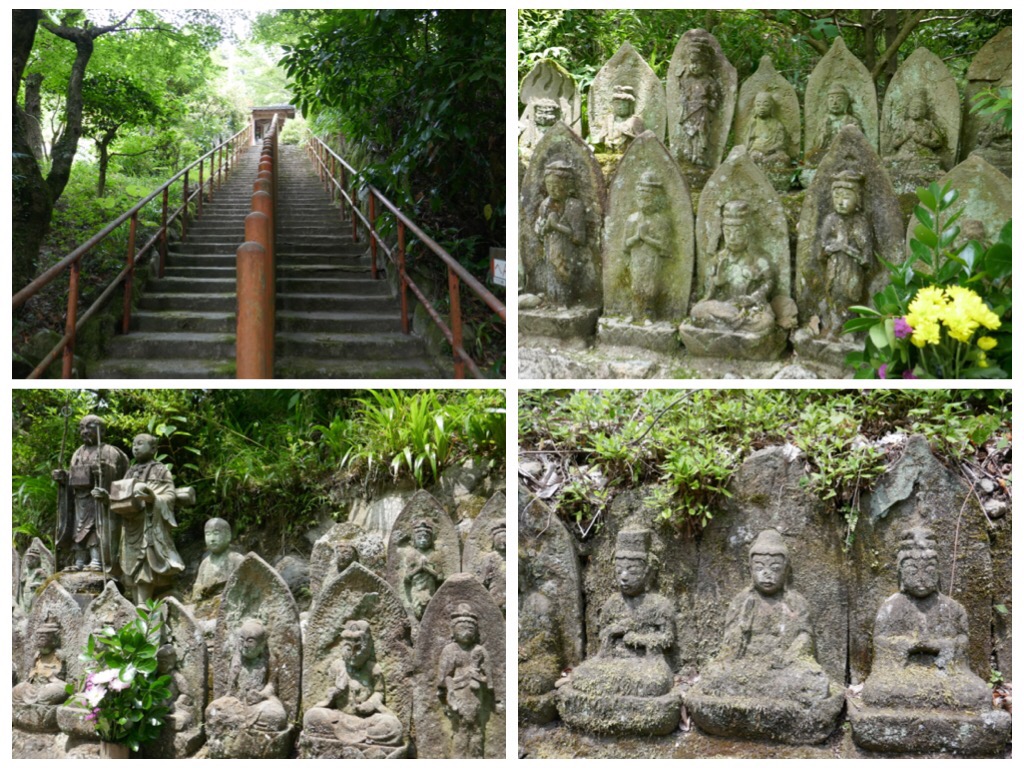


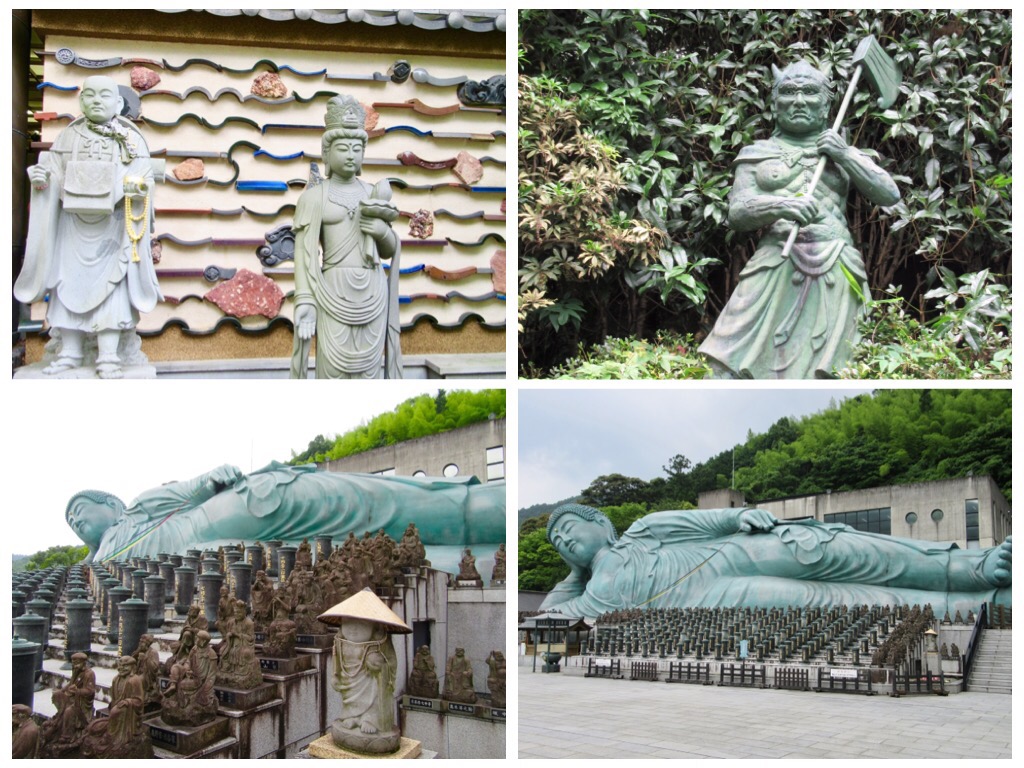











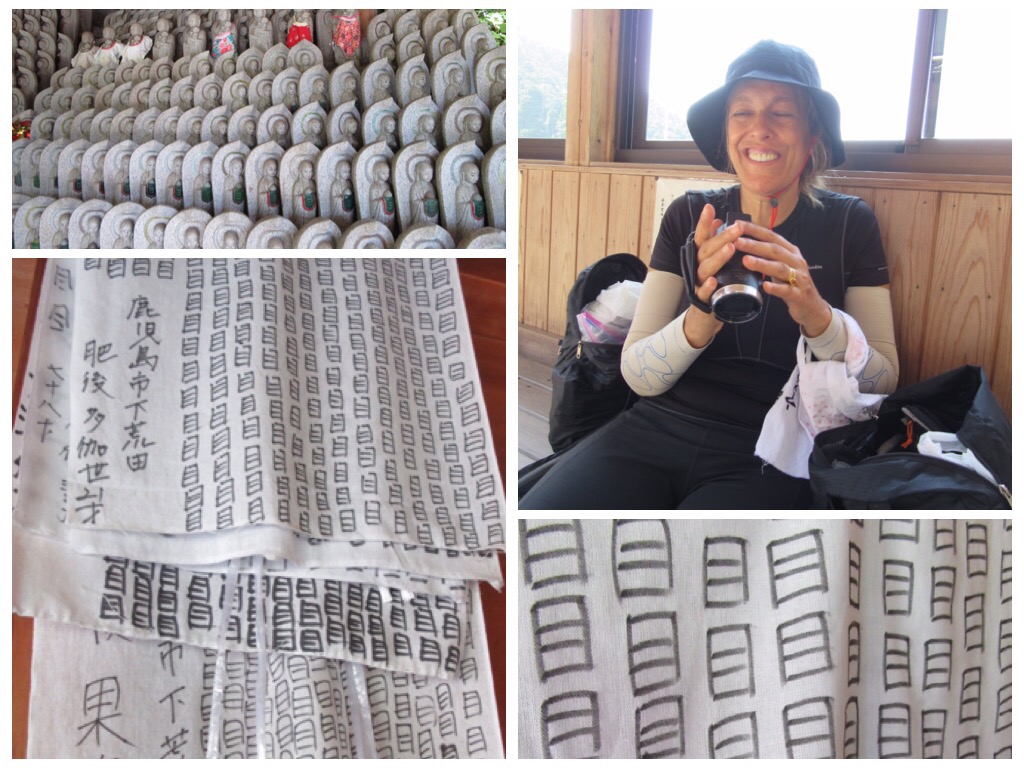

Thankyou for your post. I live in Fukuoka and have been to Sasaguri a couple of times. I try and walk a few temples on my day off which is usually Sunday. I will eventually finish it.
Thank you for your lovely words.
I am happy to hear that you are walking the Ssaguri 88 temples.
It is a wonderful thing to do and I hope that you will finish it!
All my best,
Tali
Hello,
I am interested in doing this pilgrimage. I have never done one before and my Japanese is not very good. I have a few questions:
1) Is it very hilly? I am in fairly good shape even though I am 61 and not a hiker.
2) Do you think someone who has minimal Japanese language skills can navigate this?
3) If I take the train to Sasaguri from Fukuoko every day, can I walk to temples on the route? Or do I need to take a bus to connect to the trail every day? I guess I am asking if the route is a giant circle that requires you to get back to the end point of the previous day.
Thank you.
Hello Dear,
I think that walking the Sasaguri 88 temples will be a wonderful and very interesting adventure for you.
If you will take on the challenge, it will show you sides of yourself beyond what you currently believe you can or cannot do.
My husband Jules and I, are walking another, much longer and much harder pilgrimage in Japan right now, the Chugoku 33 Kannon temples.
This month my husband celebrated his 70th birthday and he is now a very good hiker.
In his 60’s, he was not such a great walker, although he had lots of determination and did not give up.
The Sasaguri pilgrimage cannot be done by the numbers.
The temples are not located in a sequence nor in a circle.
You will have to plan each day of walking based on what you think you can walk per day, and get off at the train station that is nearest to your walk.
There is also a bus to return you to the train station in some parts of the pilgrimage on the main road if you feel too tired to walk back to the train. (Buses are not frequent)
Compare to other parts of Japan, it is not a mountainous area, but there will be some hills to climb.
It is up to you how you want to walk this pilgrimage.
It is YOUR walk, your pilgrimage.
You make the rules.
You learn the life’s lessons that you will encounter along the way.
We continued walking from temple to temple, or from the last train station that we got to the day before.
If you wish to take a bus to connect to the trail every day, it is your choice to make.
Speaking Japanese is not a requirement.
But being able to read the Google maps is essential.
If you want and if you have the time to wait, I can send you the coordinates of the temples that I have made in my notes.
Best wishes to you,
Tali
Hello Tali,
Great pictures!
You write that you have coordinates of the temples of the Sasaguri 88. Would you please be so kind to send these to me? I am planning to walk the tour next year but cannot read Japanese. These coordinates will be very helpful. Thank you in advance, with kind regards!
Hi Niels,
Thank you for your message.
I will need a few more days to organise my notes and I will post and send you the google maps coordinates for all the Sasaguri 88 temples addresses.
Take care,
Tali
Hi Niels,
I just found my notes.
Let me know if you need any more info.
Sasaguri 88 Temples pilgrimage in Fukuoka, Kyushu Island, Japan
Here is a link to the Google Maps addresses of the temples
https://www.google.com/maps/placelists/list/27E6k3eutOUEYhzdo1DXx_24kuJ6xg
A link to the Sasaguri 88 temples pilgrimage in Japanese:
篠栗四国八十八ヵ所霊場 | 情報誌おすすめ企画 | 福岡県観光情報 クロスロードふくおか
Japanese Map of temples:
https://www.crossroadfukuoka.jp/osusume/2008spring/page_img/map.pdf
Thanks a lot! September 2023 🙂
Hi Tali,
I will be following the Sasaguri Pilgrimage with a friend soon. Thanks for all your good information here. I tried to access your Google Maps addresses if temples but the link doesn’t work. If you have a chance to update the link, please let me know.
Hi Jessica,
Thanks for your kind words.
Here is the corrected Google link:
https://www.google.com/maps/placelists/list/27E6k3eutOUEYhzdo1DXx_24kuJ6xg
I wish you much fun in doing this pilgrimage.
I wish I could come to Japan now and walk a pilgrimage also…
All the best,
Tali
Thanks so much, Tali! This will be a big help. We are really looking forward to the trip, further inspired by yours.
Thank you so much for this wonderfully written details. My husband and I did a few but will have to come back to Japan and little by little accomplish this pilgrimage.
Ciao, bellissimo il tuo racconto.
Sarò in Giappone, da sola, per la quinta volta quest’estate. Ho già fatto il Saigoku Kannon Pilgrimage e ora vorrei provare a fare una parte del Sasaguri ( i templi che riesco a raggiungere facilmente a piedi). Ho un timore che mi ha accompagnato anche nel pellegrinaggio nel Kansai, quando camminavo da sola nel bosco: ci sono orsi? Hai sentito mai da qualcuno che questo potrebbe essere un rischio in alcune zone boscose? (Quando feci il percorso da Magome a Tsumago, all’uffico informazioni mi diedero una campanella da suonare durante la camminata). Grazie mille, Sabrina
Dear Sabrina,
Thank you for your lovely comment. Since you have already walked the Saigoku and part of the Nakasendo, you will have no problem at all with walking the Sasaguri 88. There is no chance you will encounter bears at this area. It is open space and some of it is rural, but it is not a big forested area. It is more like urban mixed with an open countryside. I have walked many pilgrimages in Japan and never heard a story of anyone attacked by a bear. This is an easy pilgrimage and fun to do.
Wishing you a great journey, Tali
Thank you so much for your reply.
I hope to be able to make at least half of the pilgrimage, reaching the closest temples. Thanks again
Sabrina